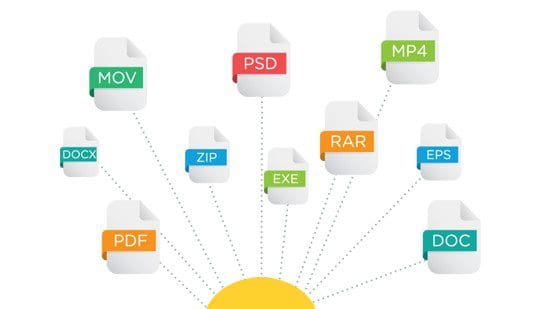Essential Features of An Efficient Data Integration Solution
This blog highlights the essential features of a data integration solution that help an organization generate consistent and accurate data to keep the business running smoothly.
By Rabia Hatim, Senior Marketing Strategist
Reliable data insights play a significant role in delivering tangible business outcomes, whether to help identify new revenue streams, drive greater business efficiencies, or enhance employee abilities to serve their customers better. Unfortunately, many corporations struggle when it comes to getting a complete picture of their organizational data. According to an ESG research report, over 36% of organizations report data integration as one of the top challenges within data analytics technologies and processes.

Many large and mid-sized organizations typically have their data isolated in different systems instead of integrated within the business. Data integration solves this problem by allowing better availability of information for different departments and business processes. However, data integration is much more than that!
An effective data integration solution must allow organizations to merge different data types, leverage the data, and understand where it came from and how it is relevant to the business’s needs. Whether you are going for the ETL approach or the ELT approach for data integration, the underlying story remains the same - driving intelligent insights by extracting data from its original source, transforming it based on various requirements, and finally, loading it to a data lake or data warehouse for analysis.
The real challenge in this regard is acquiring the right data integration solution. It is important to find out the key features before investing in a software that will handle all your enterprise data. Unfortunately, many businesses fail to do so. They end up struggling because of a missing feature, the lack of scalability, or a complex interface among other issues.
Without further ado, let’s look at some of the essential features in a data integration solution that can help your organization streamline business processes. These features can help the enterprise run smoothly by allowing the business to get the right data at the right time and place.
1. Maintaining Data Integrity and Quality
Maintaining the integrity and quality of data received from disparate sources is essential if the business is to draw accurate insights from it that might give the organization an edge over its competitors.
Most of the time, the data received from source systems has errors and inconsistencies that must be removes before it can be used for analysis. These errors may include duplicate entries, formatting inconsistencies, extra spacing, and other issues that can impact the integrity of the data.
A data quality improvement feature built-in within the data integration software can help clean, standardize, and validate the data as it is received from various sources, leaving you with quality data for effective analysis.
2. Unlimited Scalability
Scalability and data integration are the top two issues when it comes to data management. Large organizations must handle huge quantities of data, whether it is internal or external. The flow of data within the organization can change from time to time. This requires a robust, high-performance, scalable system that can keep up with the processing requirements of large quantities of data and information. A scalable data integration solution removes any limits from the current or future volume of data of an enterprise.

3. Ability to Leverage Data from Unconventional Data Sources
One of the key features of an efficient data integration system is the ability to integrate, transform, and leverage data from numerous sources. Common file formats such as SQL Server, PDF, etc. are usually supported by all types of data integration software. However, with data pouring in from diverse channels, many businesses don’t have the support for unconventional source systems, which leaves gaps in the analysis.
To make the data integration process more efficient, enterprises must acquire a solution that supports various unconventional data sources, such as COBOL file formats, EDI file formats, email sources, and XML/JSON files. The cherry on the top would be the ability to connect to SAP HANA, Oracle and other widely used database platforms.
4. Automation (Scheduler)
With information pouring in from several internal and external sources, the data flow never stops in an organization. Automation ensures that the information access through various business processes remains uninterrupted.
A built-in job scheduler within the data integration system allows business users to schedule and automate everything from simple data transformation to executing complex workflows. By automating tedious and repetitive processes such as revising employee information, performing regular backups, updating inventory, saving customer invoice information, and more, organizations can reduce IT and development costs while improving operational efficiency.
5. Simple Interface
Organizations are rapidly shifting toward no-code software solutions as an attempt to empower business users to monitor the information flow. The latest data integration software have simple interfaces with drag-and-drop features that allow business users to access data and system functionality without getting overwhelmed by the underlying technical intricacies.
A simple interface allows anyone with basic computer skills to understand the data integration platform and learn to use it easily. Enterprises are no longer beholden to IT professionals or teams of developers whenever they need to perform data integration, thanks to these easy-to-use tools.
Final Thoughts
While this list is in no way all-encompassing or covers all the features an organization might need for their data integration process, it highlights the key features according to the current market demand. So, a note to the organizations looking to upgrade to a better data integration solution, it’s all about doing your research before finding the right data integration solution that works for your business.
Bio: Rabia Hatim is a content strategist at Astera Software, a rapidly growing provider of enterprise-ready data solutions. She works with the marketing team to provide valuable insights, and the latest updates regarding data management and data integration to inform and educate business users regarding various data solutions and their viability for different businesses.
Related:
- What’s ETL?
- A Beginner’s Guide to Data Integration Approaches in Business Intelligence
- Date Processing and Feature Engineering in Python
